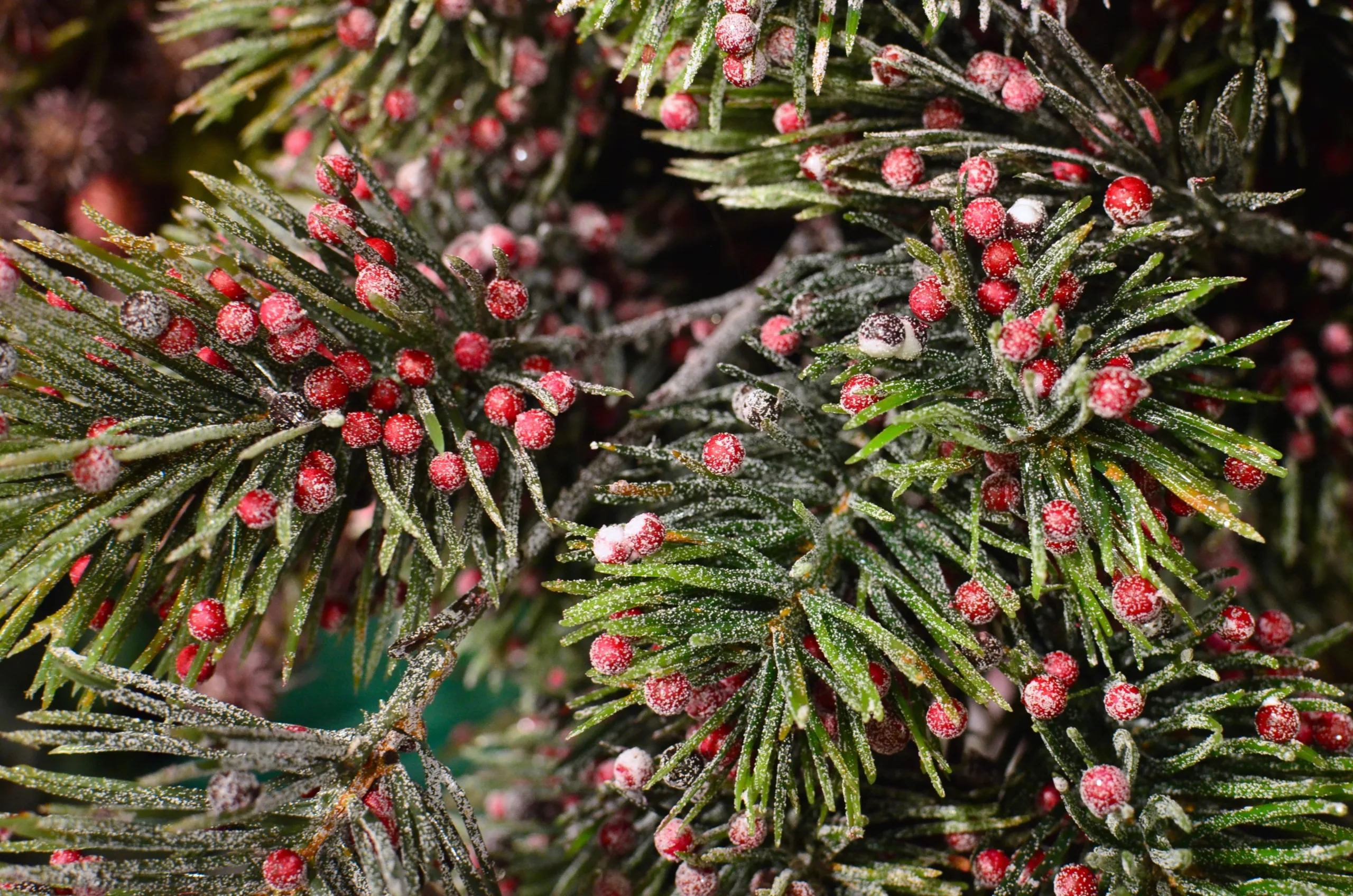Trees are an essential part of our environment, providing beauty, oxygen, and shelter. But how long does it take for a tree to grow? Understanding the growth rate of a tree can help you plan your garden or landscaping projects, and ensure that you get the results you want. In this article, we’ll look at how long it takes for trees to mature and reach their full size. We’ll also discuss ways you can help your trees grow faster and stronger.
By the end of this article, you will have a better understanding of how long trees take to grow so that you can plan accordingly for your next project.Trees grow at different speeds depending on the species, age, and environmental conditions. Generally speaking, most trees will grow at a rate of around 1 to 2 feet per year.
What Factors Affect Tree Growth?
Tree growth is affected by a variety of factors, including the environment, climate, soil type and quality, the availability of nutrients and water, and the presence of pests or diseases. Each factor can have a significant impact on how quickly trees grow and how healthy they remain throughout their lives.
Environmental factors such as temperature and light play an important role in determining tree growth. As temperatures increase, trees will typically grow faster. Meanwhile, too much direct sunlight can cause damage to some species of trees. Trees also need adequate humidity levels for optimal growth.
Soil type and quality are also important determinants of tree growth. Different soils can provide different levels of nutrition to trees; for instance, clay soils are typically not very nutrient-rich while sandy soils may provide more nutrients to help support tree growth. Poor soil quality can lead to stunted tree growth or even death if it is not properly amended with nutrients or fertilizer over time.
The availability of water is another critical factor affecting tree growth; trees require a certain amount of moisture to remain healthy and thrive in their environment. To ensure that trees have access to enough water for optimal growth, gardeners should pay attention to local rainfall amounts as well as irrigation systems that may need to be installed in dryer climates or during periods of drought.
Lastly, the presence of pests or diseases may also impact tree health and subsequent growth rates. If a tree is affected by any type of pest infestation or disease, it is important to take action quickly in order to protect the health and vigor of the tree before the problem worsens over time. By following a regular maintenance schedule including pruning dead branches or leaves, removing weeds from around the base of the trunk or spraying insecticides when necessary can help keep pests under control and ensure that your trees stay healthy throughout their life cycle.
Measuring Tree Growth
Measuring the growth of a tree is important in order to monitor its health and development. It can also help you determine whether or not it is suitable for a particular purpose, such as providing shade or serving as a windbreak. There are several methods of measuring tree growth, depending on the type of tree and the purpose of the measurement.
The easiest way to measure tree growth is to physically measure the circumference of the trunk at breast height (or 4.5 feet above ground). This will give you an indication of how much your tree has grown over time. You can also measure the height of your tree by using a tape measure, a laser rangefinder, or even a clinometer.
Another way to measure tree growth is by taking annual photographs of the same spot in your garden and comparing them over time. This can be especially useful for trees that have slow growth rates, such as fruit trees. You can also use aerial photographs from land surveys or satellite imagery to get an idea of how much your trees have grown in different areas over time.
Tree rings are another common method for measuring tree growth. By counting and studying the number and size of rings, you can get an accurate record of how much your tree has grown in any given year. This method can also tell you about environmental conditions that may have affected your tree’s growth rate during certain times.
Finally, you can use specialized tools such as a dendrometer or treering analyzer to track changes in the diameter of a single branch over time. These tools are particularly useful if you want to monitor small changes in diameter that might indicate disease or insect damage before they become visible with other methods.
No matter which method you choose, measuring tree growth is essential for ensuring its health and helping it reach its full potential over time.
Types of Tree Growth
Tree growth is a process that occurs over time and can be divided into three main types: primary, secondary, and tertiary. Primary growth is the initial growth of a tree, when it grows taller and develops thicker bark. Secondary growth follows this initial stage and includes the development of branches, twigs, and leaves. Tertiary growth is the last stage of tree growth where the tree may form flowers or fruits.
Primary growth occurs through the formation of new cells in the cambium layer of a tree trunk or branch. This layer is responsible for increasing the diameter of a tree by forming additional layers of wood around the circumference. As these layers are formed, they eventually harden to create stronger structures for support. The primary growth process will continue until the tree reaches its maximum height.
Secondary growth takes place after primary growth has occurred and is responsible for increased branching and leaf production in trees. This type of growth begins with bud formation at the tips of shoots and branches on a tree, followed by leaf production from those buds. As more leaves are produced, more photosynthesis can occur which allows for further secondary growth in terms of increased branching and twig formation in trees.
Finally, tertiary growth is an additional stage that some trees may enter into when they flower or produce fruit. This type of developmental increase helps to attract pollinators to aid in reproduction, as well as other beneficial insects to help protect against disease or pests. In some cases, tertiary growth may even involve additional thickening or strengthening of existing structures such as branches or trunks on trees.
Tree growth is a complex process that involves several stages that lead to an overall increase in size and complexity over time. By understanding these different stages it can help us better understand how different species may grow differently under different environmental conditions as well as how to better care for our trees in terms of pruning or fertilization needs.
Different Growth Rates of Trees
The growth rate of a tree is determined by a variety of factors, including its species, size, location, soil quality and climate. Some species grow much faster than others; for example, tropical hardwood trees like teak or mahogany can grow up to 6 feet per year. In comparison, coniferous trees such as pine or cedar tend to be much slower-growing and may take up to 15 years before they reach maturity.
Climate also plays a big part in determining how quickly a tree will grow. In temperate climates where temperatures are moderate and rainfall is plentiful, trees tend to grow faster than in arid climates with long periods of drought. Furthermore, the type of soil can have an effect on the speed of growth as well; for example, clay soils hold water better than sandy soils which can lead to faster growth rates.
Finally, the size of the tree can also have an effect on its growth rate; larger trees tend to grow more slowly than smaller ones because they need more energy and resources to survive. This is why it’s important to ensure that young trees are properly cared for and not over-pruned or damaged as this can stunt their growth.
In general, it’s difficult to predict exactly how quickly a tree will grow as there are so many variables that come into play. However, with proper care and attention most trees can reach maturity within 10-15 years depending on their species and growing conditions.

What Trees Grow Fastest?
Trees that grow rapidly can provide fast shade, privacy and wind protection. Some species of trees are known for their rapid growth, while others take many years to reach their full potential. The fastest-growing trees are often short-lived and have weak wood, making them unsuitable for use as lumber. But they can be used as a quick fix in landscaping or in situations where a fast-growing tree is desired.
The fastest-growing trees include hybrid poplars, black willows, Lombardy poplars and silver birches. Hybrid poplars can grow up to ten feet per year on average, with some of the faster varieties reaching heights of up to twenty feet per year. Black willows can grow even faster than hybrid poplars, reaching heights of up to fifteen feet per year with some varieties growing even faster. Lombardy poplars also have a rapid growth rate, reaching heights of up to twelve feet per year on average. Silver birches are also known for their fast growth rate, reaching heights of up to seven feet per year on average.
Fast-growing trees typically require more care than slower-growing varieties due to their weak wood structure and shallow root systems. They should be planted in areas where they will receive plenty of sunlight and water and should be pruned regularly to promote healthy growth and reduce the risk of disease or pests affecting the tree’s health. Additionally, they should be protected from strong winds and severe weather conditions as these can cause damage or weaken the tree’s structure over time.
In conclusion, there are many types of trees that grow quickly; however, it is important to consider factors such as the purpose for which you need the tree and its ultimate size when selecting a species that is suitable for your needs. Fast-growing varieties may not always be the best choice due to their often short life span and weak wood structure but are ideal if you need a quick fix in landscaping or need a tree that will provide shade or privacy quickly.
Fertilize Regularly
Fertilizing regularly is one of the most important steps to promote faster tree growth. It is best to use a slow-release fertilizer that can be applied every two or three months. This will ensure that the tree has a steady supply of essential nutrients, such as nitrogen, phosphorus, and potassium. When choosing a fertilizer, look for one that contains a balanced ratio of these essential nutrients. Additionally, you may want to add trace elements such as iron, copper and zinc to help with root development and overall health of the tree.
Improve Soil Quality
The quality of the soil your trees grow in is an important factor in promoting faster growth. Make sure that your soil is well-drained and free from heavy clay or other dense materials. If necessary, add organic matter such as compost or peat moss to help improve drainage and aeration. Additionally, adding mulch around the base of the tree can help keep soil moist and diminish weed growth.
Water Properly
Trees need water to survive and grow, but proper watering techniques are essential for optimal growth rates. Start by monitoring soil moisture levels; if it feels dry or crumbly beneath your fingers, it’s time to water. Apply water slowly and deeply at the base of the tree, taking care not to overwater or saturate the trunk area. Watering deeply encourages roots to grow down instead of staying close to the surface which can lead to weaker trees.
Prune Strategically
Pruning can be beneficial if done correctly; however, it should only be done when necessary. Removing dead branches helps promote healthier growth by allowing for more sunlight and air circulation within the canopy. Pruning should also be used selectively when trying to direct energy into certain areas of growth or reduce excessive branching on young trees.
Provide Adequate Sunlight
Trees rely on sunlight for photosynthesis; without adequate sunlight they are unable to produce food for themselves and will struggle with slow or stunted growth rates. Planting trees in an area with full sun exposure will help them reach their full growth potential faster than those planted in shady areas. Additionally, planting trees close together can create competition for sunlight which can stunt their development.
By following these steps you will ensure that your trees have all they need for healthy growth and development!
The Impact of Climate Change on Tree Growth
Climate change is having a direct impact on the growth of trees, leading to a decrease in the spread of forests and the health of our planet. Trees are essential for maintaining a healthy environment, providing food, oxygen, and shelter to countless species. As temperatures increase due to climate change, tree growth is affected in a number of ways.
Temperature
The most obvious way in which climate change affects tree growth is temperature. Trees thrive in climates with moderate temperatures that do not vary drastically throughout the year. As temperatures increase due to climate change, trees are faced with increasingly harsh conditions that can stunt their growth or even kill them if the temperatures become too extreme. In addition, extreme weather events such as heat waves can also have a negative impact on trees by damaging their leaves and branches.
Changes in Rainfall Patterns
Climate change can also lead to changes in rainfall patterns which can have an adverse effect on tree growth. If there is not enough rain for an extended period of time, trees may become drought-stressed and suffer from poor health or even death. On the other hand, if there is too much rain over an extended period of time, trees may suffer from root rot or fungal infections which can weaken them and reduce their ability to take up water and nutrients from the soil.
Soil Conditions
In addition to temperature and rainfall patterns, climate change can also lead to changes in soil conditions which can affect tree growth. Warmer temperatures may lead to an increase in soil erosion which reduces the amount of nutrient-rich topsoil available for tree roots to anchor themselves into. In addition, warmer temperatures tend to speed up microbial activity in soils which can lead to increased levels of disease-causing organisms that may damage trees’ root systems.
Overall, climate change has far-reaching effects on the environment, including its impact on trees and their ability to grow properly. By understanding how climate change affects tree growth we can better prepare ourselves for its potential impacts and take steps towards mitigating its effects on our planet’s forests and ecosystems.

Conclusion
Trees are an important part of our environment and can take many years to grow. We can help them grow faster by providing the right conditions and caring for them properly. Different species require different levels of care and attention, but in general, trees will reach their full height after a few years if provided with adequate sunlight, water, and nutrients. Different climates also play a role in how quickly trees grow; some trees may reach maturity more quickly in warmer climates than colder ones. Trees are an important part of our ecosystem, so it’s important to understand how long they take to grow and do our part to help them thrive.
In conclusion, trees can take anywhere from one year to decades depending on the type of tree, climate conditions and care it receives. Understanding the needs of a particular tree species is key in ensuring its successful growth over time. Trees are essential for maintaining a healthy environment, so it is important to ensure they receive proper care and attention throughout their life cycle.
Mark Hoffman is a dedicated arborist and tree care specialist with over a decade of experience. His love for trees began when he visited Yosemite National Park as a teenager and was awestruck by the giant sequoias. Mark pursued his passion by studying forestry at Michigan Technological University, where he earned a Bachelor of Science degree.
Since then, he has worked tirelessly in the field of arboriculture, helping to preserve and protect trees in his community. His expertise and dedication have made him a respected leader in the industry and a valuable resource for anyone seeking advice on tree care.
